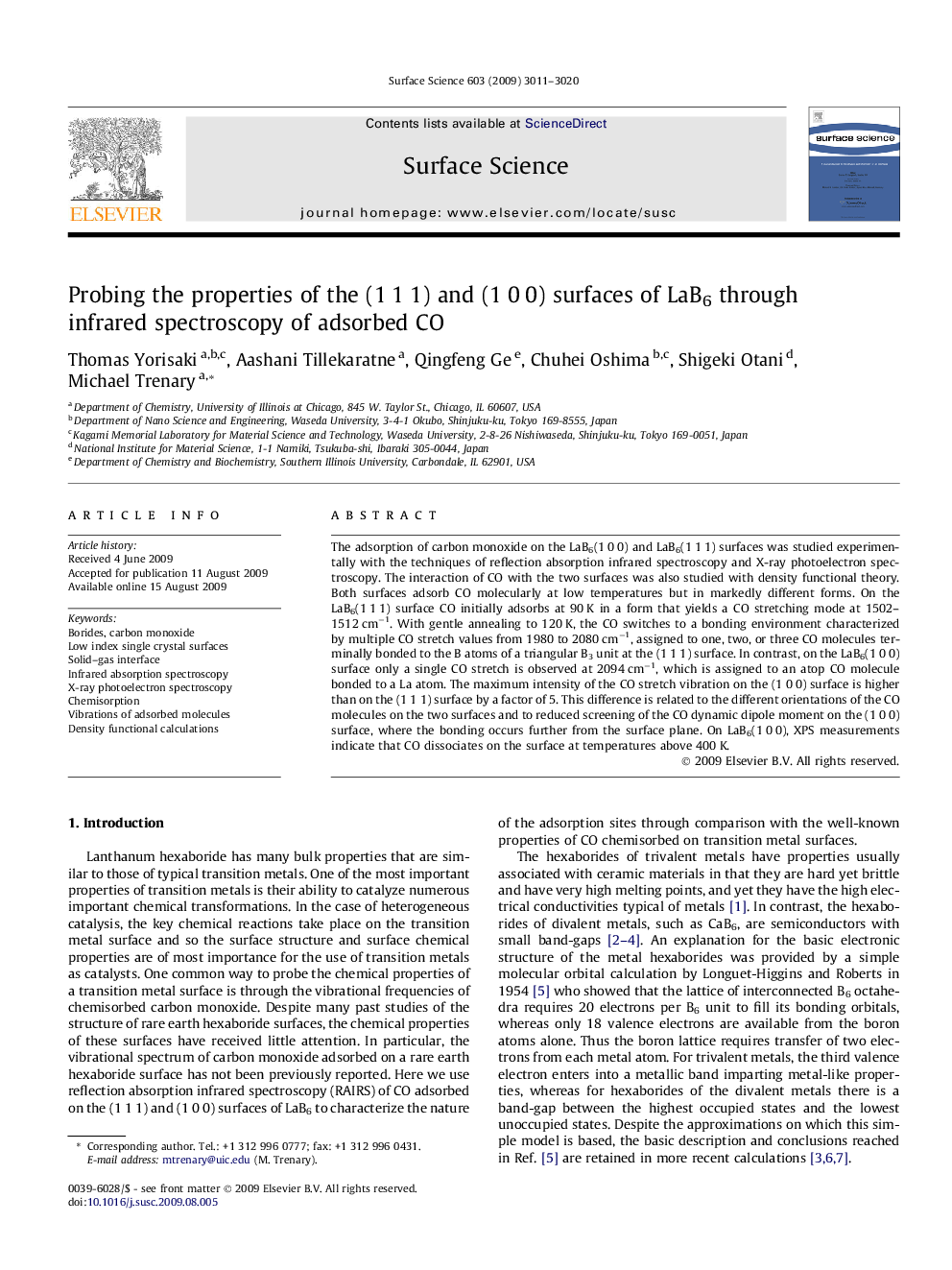| Article ID | Journal | Published Year | Pages | File Type |
|---|---|---|---|---|
| 5423623 | Surface Science | 2009 | 10 Pages |
Abstract
The adsorption of carbon monoxide on the LaB6(1Â 0Â 0) and LaB6(1Â 1Â 1) surfaces was studied experimentally with the techniques of reflection absorption infrared spectroscopy and X-ray photoelectron spectroscopy. The interaction of CO with the two surfaces was also studied with density functional theory. Both surfaces adsorb CO molecularly at low temperatures but in markedly different forms. On the LaB6(1Â 1Â 1) surface CO initially adsorbs at 90Â K in a form that yields a CO stretching mode at 1502-1512Â cmâ1. With gentle annealing to 120Â K, the CO switches to a bonding environment characterized by multiple CO stretch values from 1980 to 2080Â cmâ1, assigned to one, two, or three CO molecules terminally bonded to the B atoms of a triangular B3 unit at the (1Â 1Â 1) surface. In contrast, on the LaB6(1Â 0Â 0) surface only a single CO stretch is observed at 2094Â cmâ1, which is assigned to an atop CO molecule bonded to a La atom. The maximum intensity of the CO stretch vibration on the (1Â 0Â 0) surface is higher than on the (1Â 1Â 1) surface by a factor of 5. This difference is related to the different orientations of the CO molecules on the two surfaces and to reduced screening of the CO dynamic dipole moment on the (1Â 0Â 0) surface, where the bonding occurs further from the surface plane. On LaB6(1Â 0Â 0), XPS measurements indicate that CO dissociates on the surface at temperatures above 400Â K.
Keywords
Related Topics
Physical Sciences and Engineering
Chemistry
Physical and Theoretical Chemistry
Authors
Thomas Yorisaki, Aashani Tillekaratne, Qingfeng Ge, Chuhei Oshima, Shigeki Otani, Michael Trenary,
